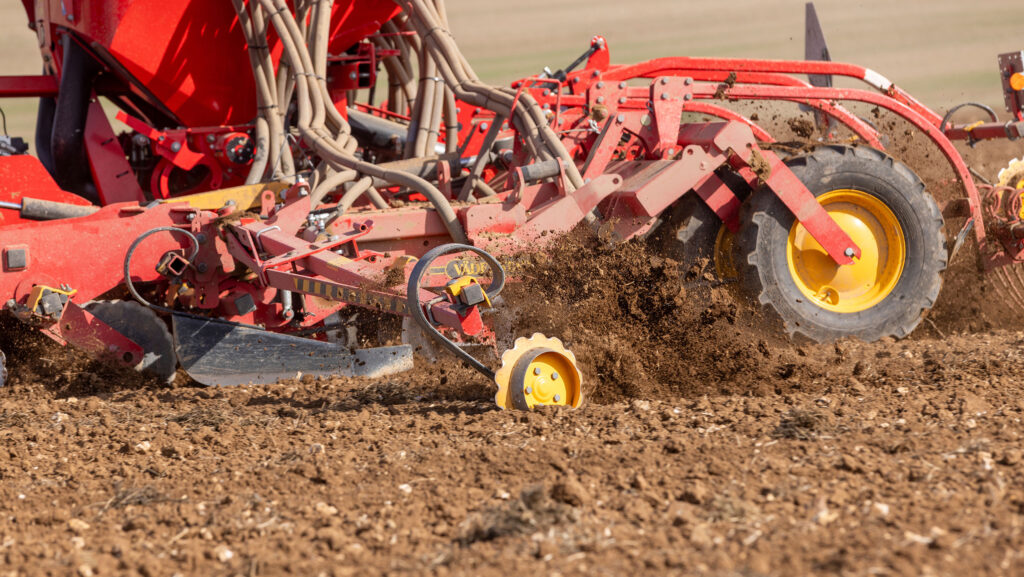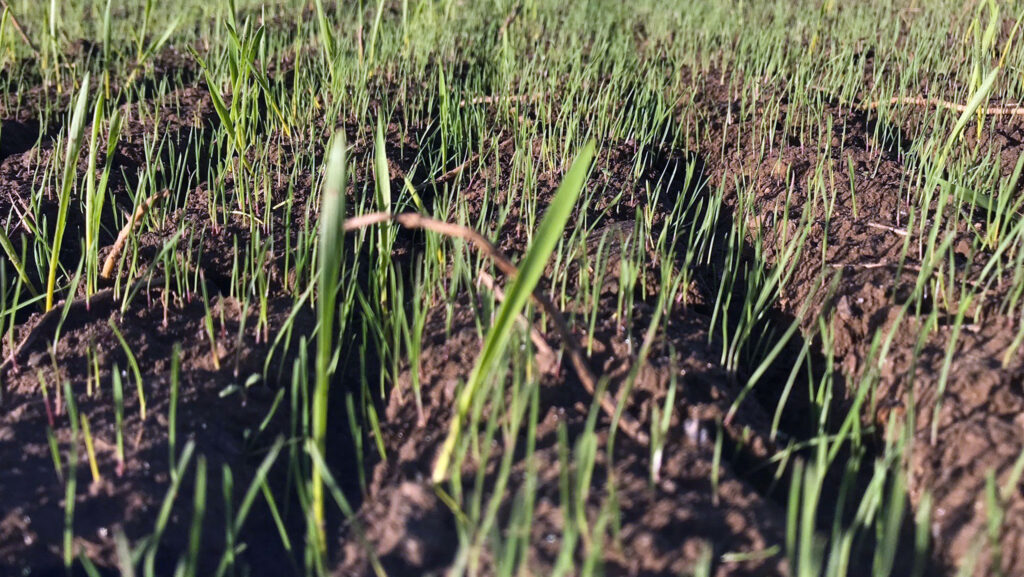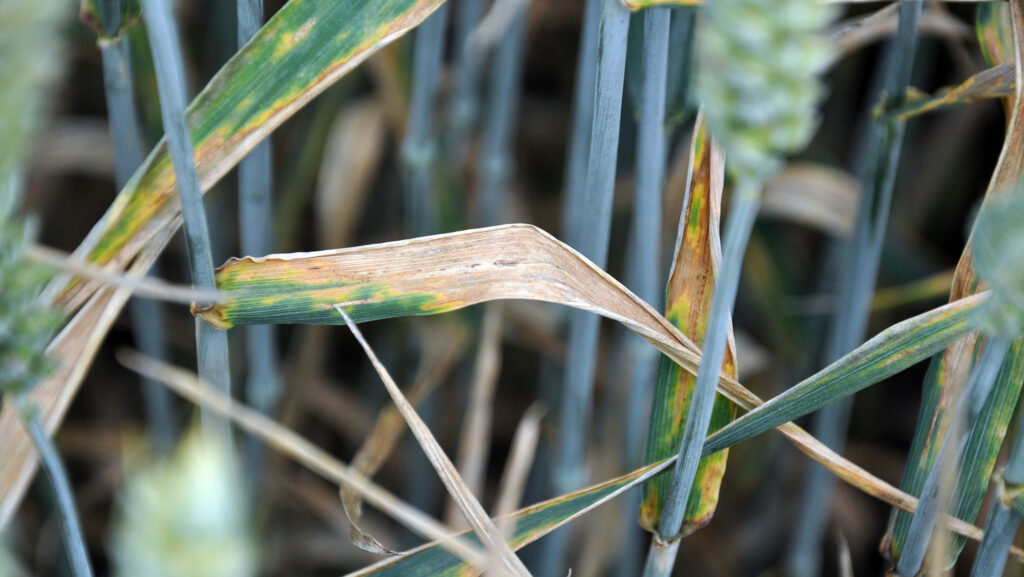What to consider if tempted to drill winter wheat early
 © Gary Naylor Photography
© Gary Naylor Photography Winter wheat growers may be tempted to establish crops earlier this autumn following last season’s washout conditions, but experienced agronomists and crop consultants are reminding farmers of the potential risks involved.
“While the idea of establishing wheat crops early this autumn is understandable, being prepared for the added risks is crucial,” says ProCam regional technical manager, Paul Gruber.
“Early drilling is for those prepared to invest extra effort into managing crops, potentially for the entire season. If you aren’t able to do this, then question whether it’s right for you.”
See also: Farmer Focus: Mass slug gatherings and a straw rollercoaster
Ceres Rural agronomist and farm consultant Joe Pitt agrees: “With variable, and at times poor yields serving as a stark reminder of the wet autumn, it is easy to think that shifting drilling earlier will serve as a remedy.”
He appreciates there is genuine concern of the weather turning and crops not being drilled, particularly for those with compressed weather windows.
However, in most cases Joe is recommending October drilling in order to achieve better grassweed and disease control.
“If forced to drill from early to mid-September, farms should drill the blocks with the lowest grassweed burden first, ensure a good seed-bed to bring even emergence and optimise residual herbicide activity,” he says.
Paul and Joe outline their advice on key agronomy approaches when it comes to earlier winter wheat drilling dates.
Grassweeds

© Procam
Perhaps the most critical risk of drilling early is grassweed control. “Drilling earlier increases pretty much all grassweed pressure. We’re coming off the back of a season with high weed burdens, so seed carryover is set to be high,” explains Paul.
Herbicide strategies will, therefore, need to be robust, which is why he advises a residual pre-emergence herbicide followed by a combined residual plus contact treatment at peri-emergence. “But don’t rely solely on herbicides,” he stresses.
Paul recommends spraying off at least one flush of blackgrass in stale seed-beds before drilling. “Without this, it could be disastrous in fields drilled too early, because huge weed numbers will germinate thick and fast.”
When it comes to blackgrass emergence, the benefits of late drilling in grassweed population control is clear – blackgrass emergence is reduced by 15% for every week of delayed drilling, from early September to mid-October, notes Joe.
“Delaying pre- and peri-emergence herbicide applications into October will also see a marked reduction in UV degradation, allowing the chemistry to remain effective in the soil profile for longer, bringing about a 20% improvement in residual effectiveness,” he says.
The efficacy of residual herbicides is dependent upon the presence of adequate soil moisture.
He points to a recent Niab study, revealing that blackgrass levels in a November-drilled wheat crop which received no residual herbicide were lower than in a late, September-drilled wheat crop, which received a comprehensive pre- and peri-emergence residual herbicide programme.
Disease risks

© Procam
Disease pressures can also increase with earlier drilling. Even in varieties with high Septoria tritici scores, September drilling has been shown to lead to much higher infestation rates, increasing fungicide costs by approximately £40/ha with poor control and infections over leaf 3 and 2.
“Trials show wheat drilled in mid-September had a Septoria tritici score a full 1 point lower than its mid-October counterpart,” says Joe.
With a well-timed T1 application still insufficient to get on top of the problem, a holistic approach combining late drilling with robust genetic resistance and a comprehensive fungicide programme is the best route forward.
Paul continues: “While earlier drilling, in theory, reduces yellow rust risk, a mild winter will encourage rust build-up. This was one reason why we saw bad brown rust this year.
“Foliar disease burdens, as well as pests and weeds, are likely to be higher in second wheats, where there’s also the complication of take-all, particularly if drilling early or into stubble.”
Eyespot risk is also increased in second wheat drilled early, and in first wheat after maize. He highlights that some varieties have the Rendezvous gene which increases resistance, so it is worth seeking advice on this.
Pests and BYDV risks
With regards to barley yellow dwarf virus (BYDV) control, the trend is repeated as early drilling encourages aphid populations to increase, and so to the aphid-borne disease.
Winter wheat emergence in September can increase the need for an insecticide application, while emergence from late October onwards significantly reduces this risk.
“Considering BYDV-resistant varieties and creating a comprehensive BYDV management plan, including green bridge destruction, will therefore be essential,” says Joe
“There will be farms looking to get an Sustainable Farming Incentive zero-insecticide payment on their winter cereals, so either opting for a later drill date or a BYDV-resistant variety will be key here.”
Achieving effective green bridges destruction is also important, Paul reminds growers.
“Ensure the green bridge is destroyed far enough ahead of drilling, so aphids cannot directly transfer from decaying grassweeds or volunteers to an early-planted crop, as aphids can emerge quickly if conditions are conducive to growth.”
“Gout fly risk also increases with early drilling, so be careful if you have a history of gout fly as there’s no chemical control, or if you have grassweeds, which are a gout fly host,” Paul adds.
Variety considerations
Correct variety choice is vital when drilling winter wheat early. As well as selecting varieties with stiff straw and good disease resistance, growers should consider varieties which are slower developing in order to account for them being in the ground for longer.
“Zyatt, Dawsum and Palladium are both better for early drilling. In general, you’re looking for a slower-growth habit through winter and stiff-strawed varieties to hold the body through the latter half of the season,” says Joe.
Extase and Champion would be ones to avoid as these are quite fast developing. Skyfall is good throughout the season and can go through to early February as it has the lowest vernalisation requirements of any recommended UK wheat.
Lodging and seed rates
Early drilling can also increase lodging risks, which makes choosing stiffer-strawed varieties key, as well as a correct seed rate.
Seed rates need reducing compared with later drilling, but check what’s appropriate for each variety and location, highlights Paul.
“You don’t want crops sown too thickly. Earlier-drilled crops are in the ground for longer, so tend to grow taller, and too high a seed rate creates densely-packed tillers and encourages taller growth.
“But if you’ve got grassweeds, sowing too thinly reduces crop competition,” Paul says.
Joe recommends a seed rate of 350 seeds/sq m for first wheats and 400 seeds/sq m for second wheats. “Add 25 seeds/sq m for each week from the second week of October,” he says.
If farmers are using home-saved seed from this harvest, ensure seed is fully cleaned and tested, and make sure seed batches are free of ergot, given the prevalence of the fungal disease in crops this harvest.
Similarly, if using over-yeared seed that couldn’t be drilled last winter, have this tested – not just for germination but also vigour, as both can decline.
Remember that the earlier a crop is sown, the more it will cost to grow. Try to look beyond the difficult autumn of 2023 and discuss with your agronomist, concludes Joe.

